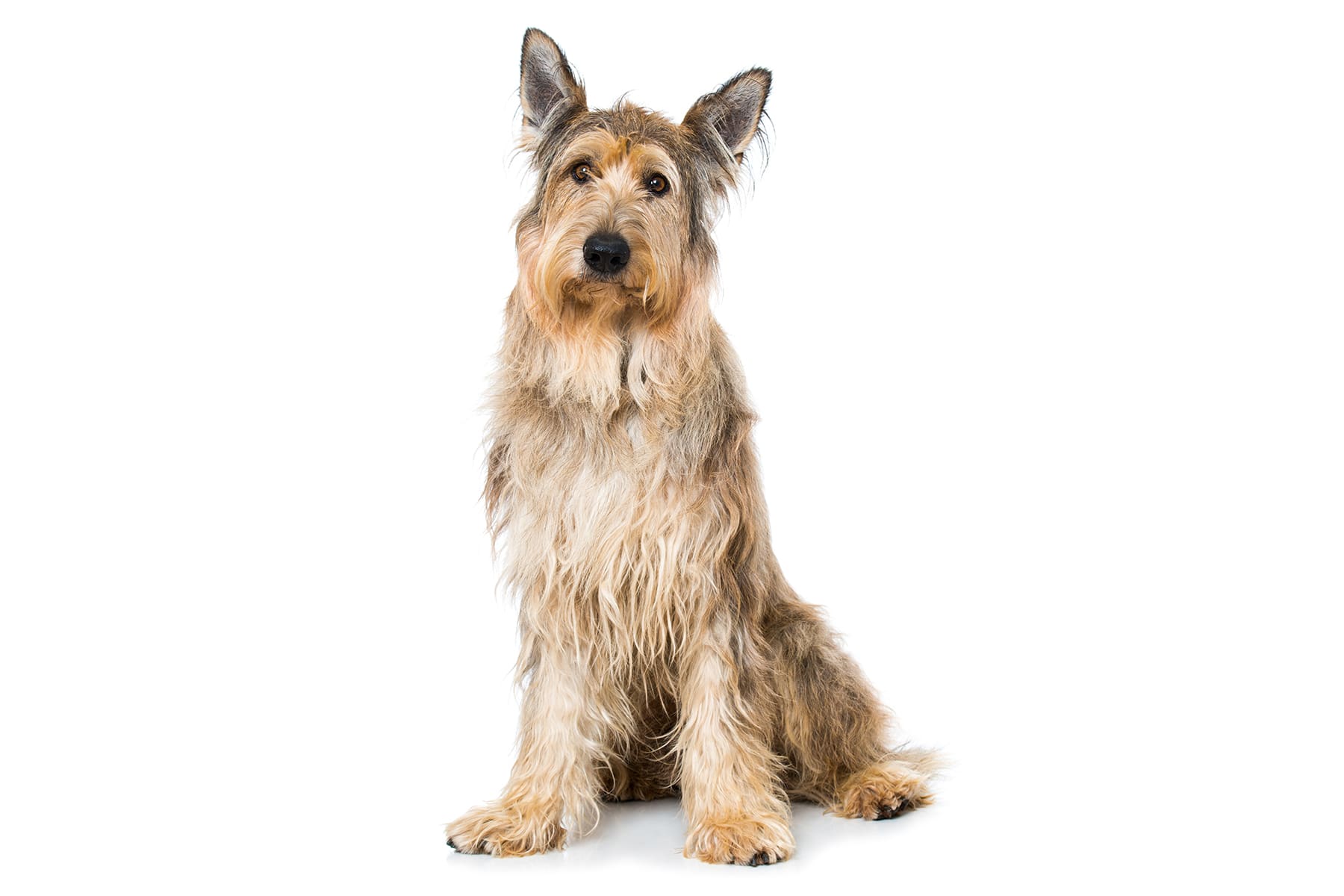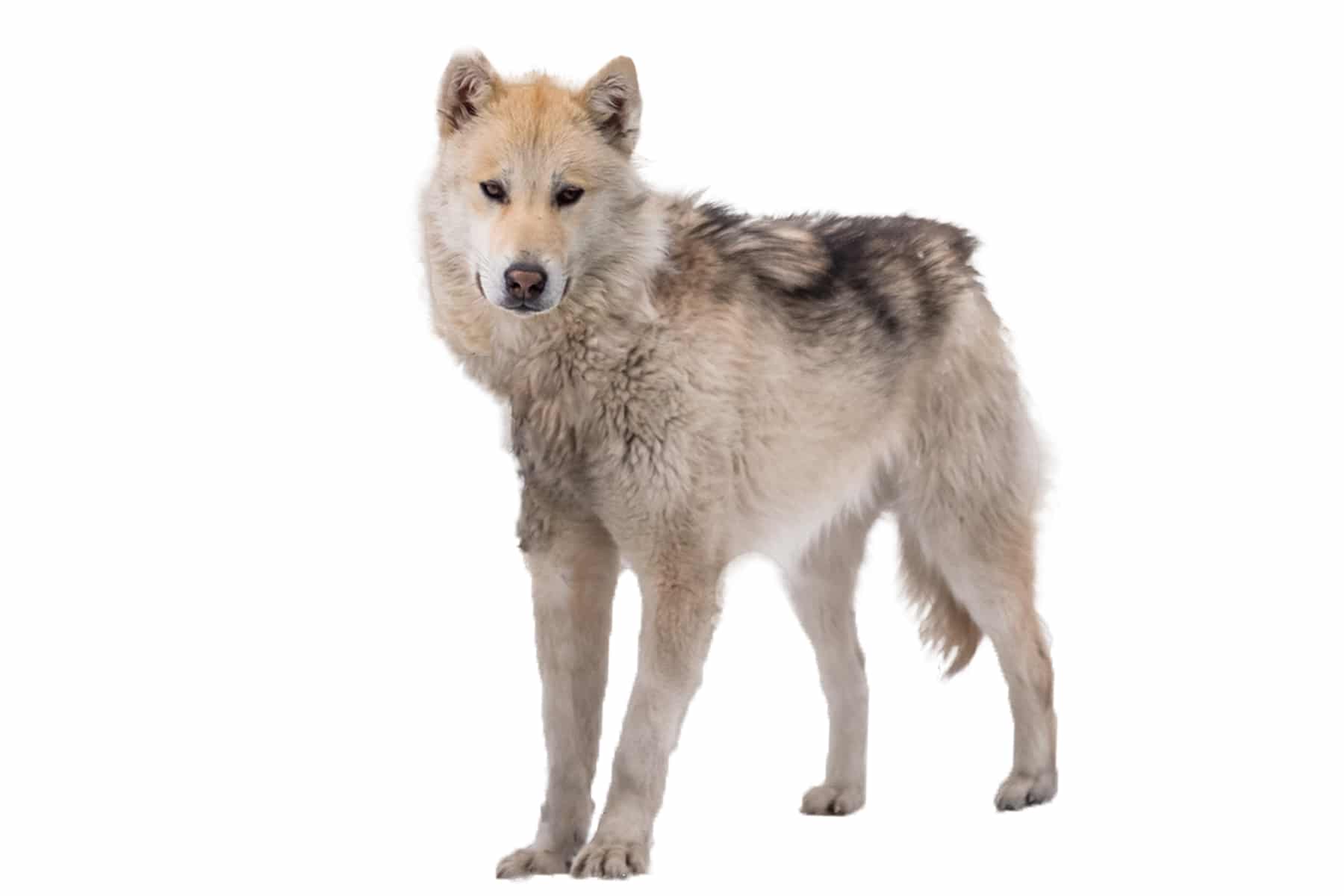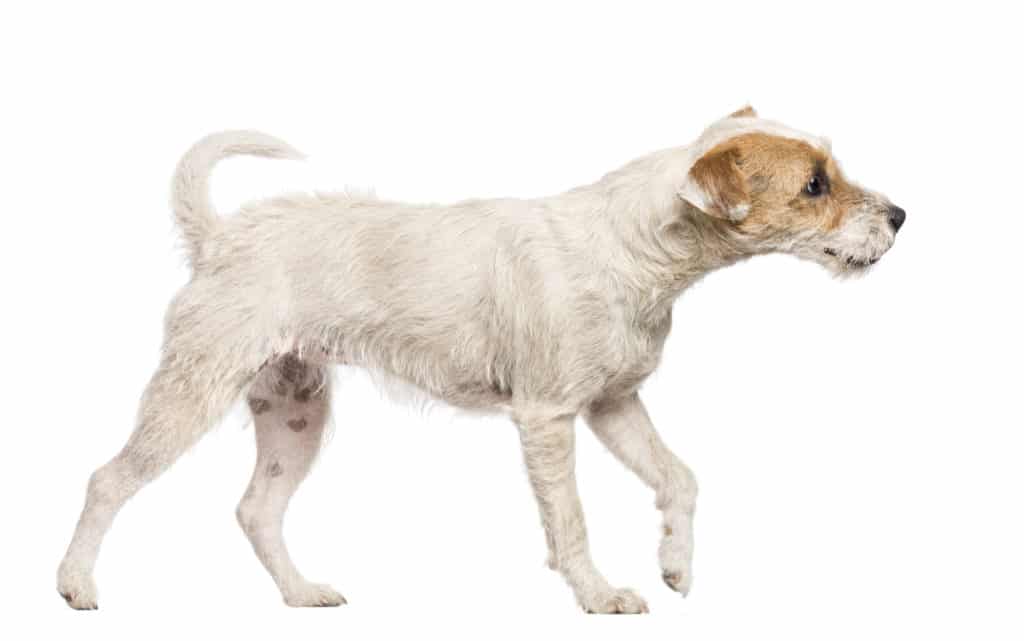West Highland White Terrier
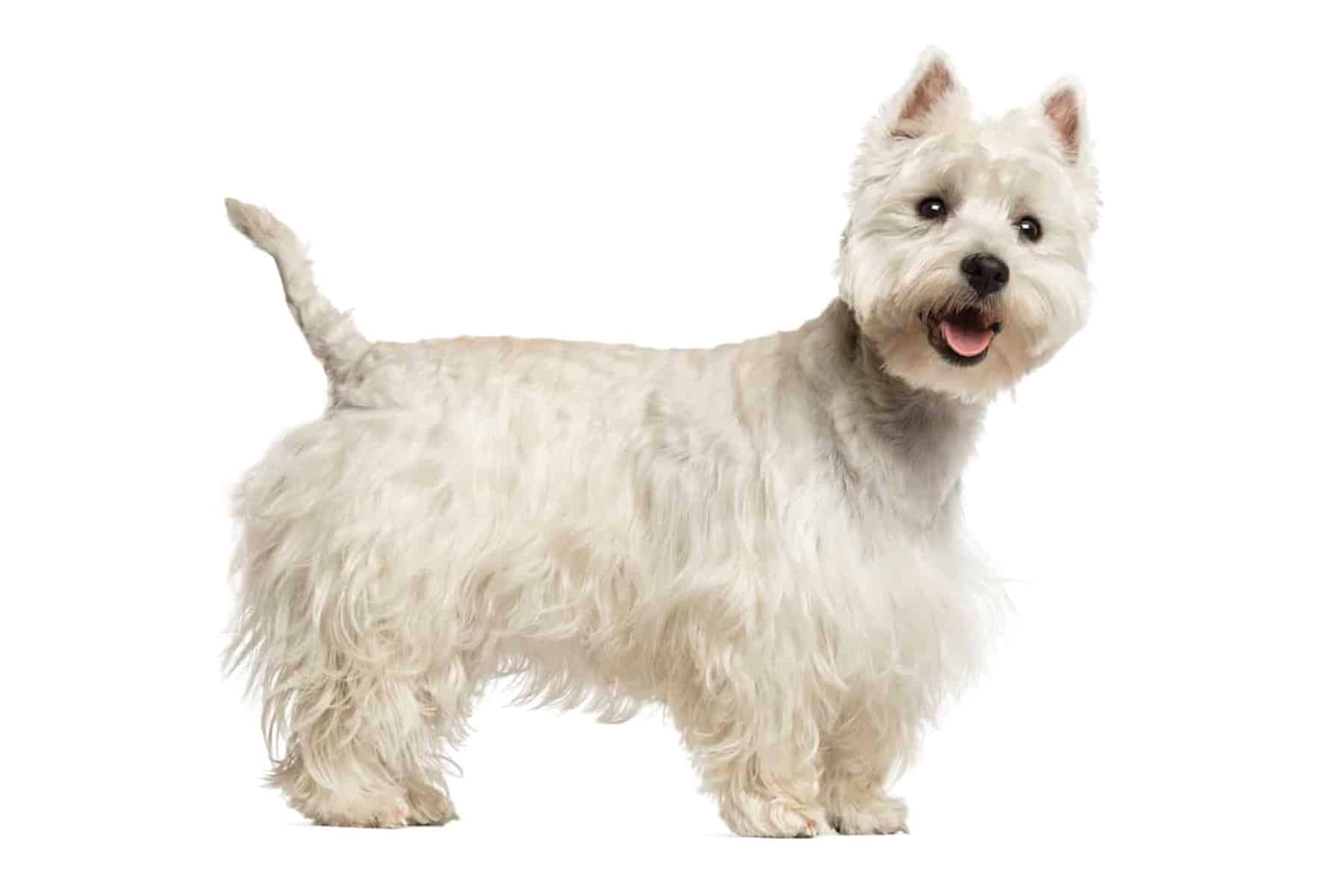
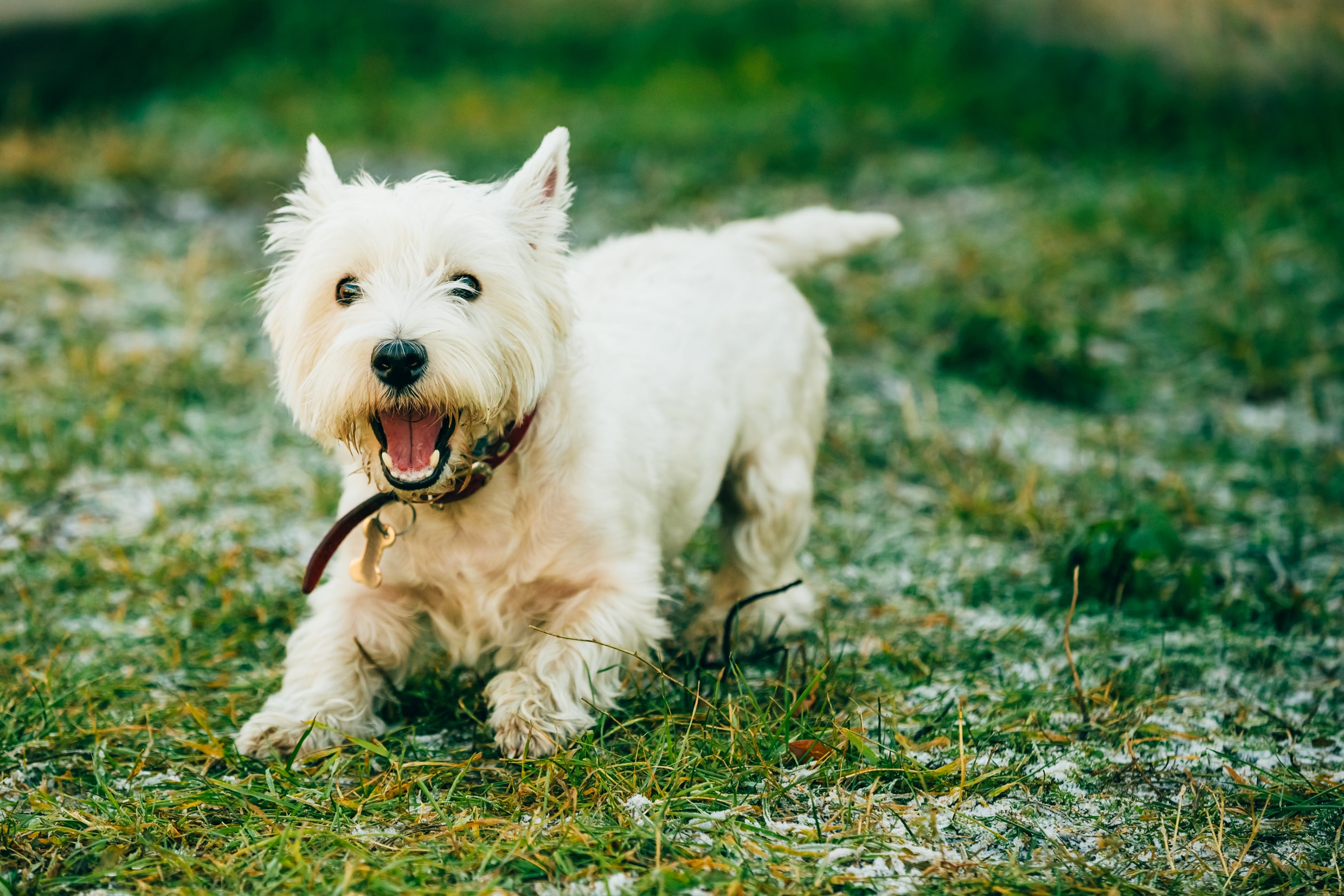
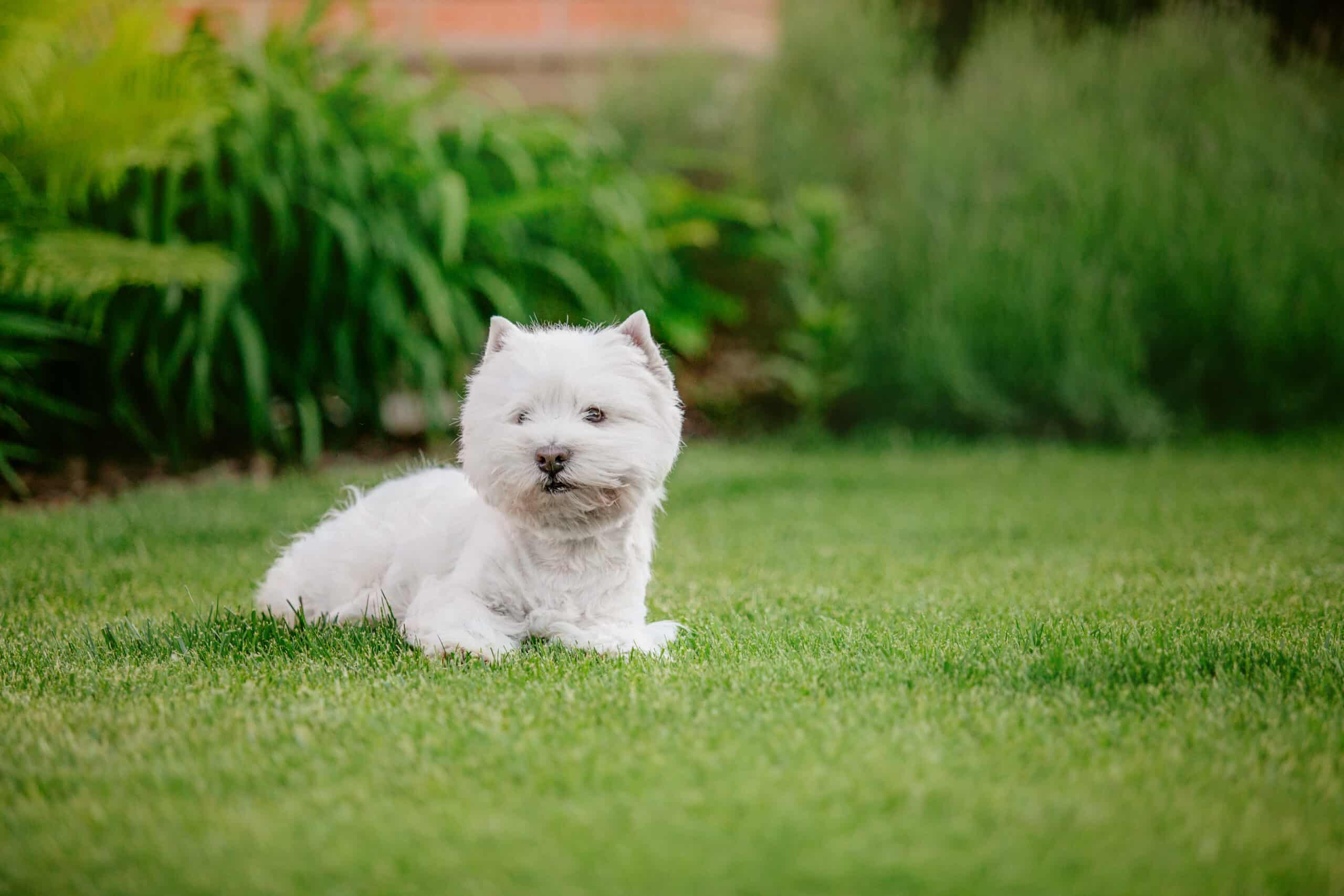
Temperament:
The West Highland White Terrier originates from Great Britain and is known as the Westie for short. In the past, the Westie was mainly used for game and domestic hunting due to its nature and agility. Some of its character traits can still be derived from this today. Today, the Westie is often considered a fashion dog. For example, they are often used in commercials.
Characteristics
The West Highland White Terrier is only available in the color white. Its shoulder height is around 28 cm. It reaches a weight of five to ten kilograms. For a dog of its size, the Westie is relatively robust and stocky. It has strong limbs that match its appearance.
The Westie's coat is thick and strong. As a result, its head often appears somewhat larger than it actually is. The muzzle is not pointed. It has bushy eyebrows and black beady eyes.
The ears are pointed. The Westie usually stretches its small ears attentively forward. The fur is covered with a short down. The upright tail is up to 15 cm long.
The coat is covered with velvety wool. White, shaggy hair grows all over the body.
The West Highland White Terrier used to hunt in packs. There was no time for fights with conspecifics. That's why the Westie is a peaceful companion. They generally get along well with other four-legged friends. Nevertheless, he sometimes wants to test his strength in a duel. The little rascal doesn't care if his opponent is much bigger than he is.
However, this can be counteracted by early socialization at a young age. The Westie is still a vigilant hunter. That's why they like to run off to follow an animal or a scent. You should be aware of this when walking your dog.
The West Highland White Terrier is a wild and active dog. It is courageous and overconfident. Its character can be described as courageous, alert, cheerful and intelligent. The Westie is very clever and persistent.
He is an excellent family dog and loves to play.
This character explains why the West Highland White Terrier likes to appear in commercials. It is also one of the most popular dogs in society.
With fashion dogs, however, you should always pay attention to where you buy your four-legged friend. Fancy dogs are often kept in poor conditions by unscrupulous breeders. Their only aim is to make a profit. So think about where you want to buy your Westie before you buy.
The Westie can be kept well in the city. But make sure he has enough exercise. He loves to run around.
Coat care:
Shedding:
Energy level:
Trainability:
Children suitable:
The right food
When choosing food, make sure that it contains high-quality ingredients, is balanced and meets your dog's requirements. Age, size or weight, activity and health status play an important role. You should follow the manufacturer's recommendations for the amount of food.
Treats should only be fed in moderation and deducted from the basic diet to avoid obesity.
Puppies can be fed 4-6 times a day. The number of meals should be gradually reduced to 2 per day until the dog is fully grown. A rest period should be observed after meals.
Fresh drinking water should be available at all times.
Health & Care
Regular grooming is essential to keep your Westie looking good.
Basically, you should pamper your pet with a few simple steps. These include brushing and trimming.
Brush and comb your dog's coat daily to avoid matting. This will keep it supple. That sounds like a lot of work. But once your dog gets used to it, it won't take much time. About a few minutes a day.
If you don't brush the coat regularly, dirt and dander will accumulate.
It's best to start doing this as a puppy so that your Westie gets used to it.
You should also trim your dog's coat every six to eight weeks. The Westie will not shed dead hair. That's why you need to help and thin out the hair. To do this, brush and pluck out the old hair.
To complete the grooming process, you can shear and bathe your Westie. However, it is best not to do this with a machine. Trim the coat by hand with scissors. It must not be too short afterwards. Then you can give him a bath. But you shouldn't do this too often. Only when necessary.
If you have no experience with clipping and trimming, a dog groomer can do it for you or you can have it taught to you.
As the Westie has a hard coat, too frequent bathing can do more harm than good. In any case, you should use a mild dog shampoo when bathing.
Your West Highland White Terrier's claws need to be trimmed from time to time if they don't wear off on their own. If your dog's claws make a noise on the floor, it's time to trim them. They should be kept about two millimeters from the ground.
It is advisable to check the paws or pads for foreign bodies after every walk.
By the way, your Westie will thank you if you brush his teeth regularly. There is special toothpaste for dogs. This will ensure that your Westie has healthy teeth. It will also have fewer problems with inflammation or tartar.
You should also clean your ears and eyes regularly.
Suitable accessories
The accessories naturally include everything you need to properly groom your West Highland White Terrier. For example, a brush and comb to brush and comb the coat, and scissors to cut the hair. You should also get yourself a pair of claw clippers and a special toothpaste for dogs.
You should give your Westie plenty to do and the opportunity to test his intelligence. This will prevent him from getting bored. Dog toys are a good alternative. Variety is fun for him. So you can buy him toys for running and romping or something that you can use to practise tricks together.
A good accessory for a Westie is certainly a toy that promotes intelligence. For example, you can hide food or treats in different compartments of the toy. The dog has to find a way to find and reach them. Again, remember that you are not doing your dog any favors with too many treats. Pay attention to his individual daily ration.
When buying a lead, collar or harness, make sure they are the right size. To give your Westie a place to retreat to, we recommend a cozy dog mat or a basket with a blanket. A transport box for transportation in the car is also recommended. You will also need a food and water bowl, a mild dog shampoo and a first aid kit. It's best to ask your vet what should be in the first aid kit.
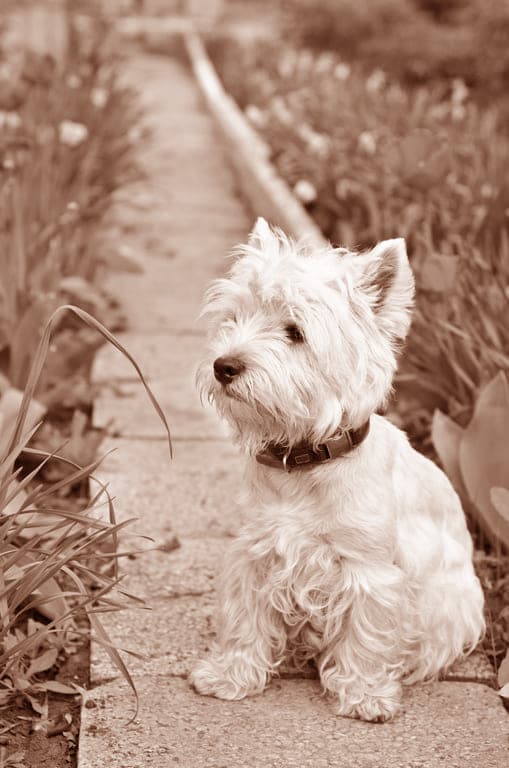
Origin & History
The Westie originally comes from Scotland. It was bred as a hunting dog. Especially for hunting game and rats. The founder of the breed was the hunter Colonel Edward Donald Malcolm. He bred with Scottish, Cairn and Dandie Dinmont terriers, among others.
Colonel Malcolm wanted to breed a fast dog for hunting. Due to its coat color, it was to be easily visible in the dark and in rough terrain. In the past, it had happened time and again that hunters had accidentally shot their own dogs in the dark because they were mistaken for small game due to their dark coat color. This is said to have happened to the colonel. Only white specimens were therefore used for breeding.
However, good visibility through coat color was only one of his goals. He wanted to breed a courageous, persistent and obedient breed. It was also important that the Westie was small. This meant it could easily enter animal burrows and holes in the ground and retrieve game.
The West Highland White Terrier was recognized as an independent breed in 1904. Shortly afterwards, a West Highland White Terrier Club was founded and breed standards were established.
The first studbook entry for a Westie in Germany dates back to 1910, but the little rascal only gained popularity in the 1970s. At that time, it was integrated as a family dog.
In the 1990s, new registrations of West Highland White Terriers rose sharply. This is probably due to a fashion trend.

